Volume 11 Number 2
©The Author(s) 2009
Color as a Semiotic Resource in Early Sign-Making
Abstract
This parent-research article juxtaposes two theoretical frameworks in support of an analysis of a young child's uses of color in her sign-making; that is, in her efforts at writing and drawing. Perspectives from both social semiotics and the idea of literacy learning as social practice frame the examination and interpretation of the early sign-making of the child, who speaks both English and Japanese. The data sources include observations, reflective notes, transcribed audio recordings, and writing and drawing artifacts collected in the home when the child was between the ages of 3 and 7 years. This article reports how color served the child as an immediate resource for classifying, discriminating, and associating between the attributes of different objects and concepts in her written and pictorial representations. Color enabled her to identify and disambiguate objects and ideas within the signs that she produced. These findings call attention to the complexities of how children become literate, particularly the ways in which they may take active roles in that process, making decisions about the modes and tools they will use to represent ideas and concepts in their sign-making. The article concludes with a discussion of implications regarding approaches to children's writing and drawing in contemporary early childhood classrooms.
Introduction
From the print in their communities to multimedia, young children live in a world that is saturated with visual and graphic information (Kress, 2001; Taylor, 1993). Today’s text is not exclusively black and white or situated in linearly configured blocks. The colors, shapes, sizes, fonts, and positions of letters and words on Web sites, environmental signs, magazines, and textbooks reflect our changing society, creating images that did not exist 20 years ago. Computers and other technology have changed our concepts of time and space, and they have altered the way that we participate in many activities (Gee, 2003). Children’s pathways to literacy in the 21st century may involve writing and reading email messages, conversing through electronic instant messages, and creating blogs. With the increased amount of visual information, semiotics researchers have emphasized that communication is multimodal; people are reading not only written words, but also images (Kress, 2001; Kress & van Leeuwen, 1996). In turn, the ways in which we view literacy development must take into account the multimodal nature of communication (Kress, 1997).
These ideas stand in contrast with current approaches to reading and writing in most schools, where accountability in the form of test results seems to guide curriculum and practice. Some researchers and policy makers seem to correlate learning to read and write with controlled processing of alphabetic and linguistic domains. Hence, phonemic awareness and phonics are often seen as the major criteria for developing the skills and knowledge needed for competent reading and writing (Adams, 2001; Shaywitz, 2003). Systematic, explicit instruction with the use of decodable, controlled texts from commercial reading programs illustrates the narrowing view of literacy and how it should be taught (Martens & Goodman, 2005). Although reading does involve the linguistic aspects of language, I argue that learning to read and write entails more than what is usually addressed in literacy curricula. Children enter school as emerging makers of pictorial and written representations that reflect their working models of written language and the ways that they use those models to mediate their activities (Owocki & Goodman, 2002). Even at 1 to 2 years of age, a child may use markers, pencils, or crayons to make marks on a piece of paper and then give it to his parents as a personal letter. As children’s fine motor skills develop, they have more control over their marks and can begin depicting the people in their families and writing letter-like forms (Baghban, 2007).
As Dyson (2007) suggests, learning to read and write means “differentiating the multiple dimensions of written language as a symbol system (from letter font to text type)” (p. 171). Within school settings, however, children are often expected to move from their own highly contextualized ways of expressing meaning to using isolated sets of skills with tests and workbooks that have little to do with their everyday lives (Taylor, 1993; Taylor & Kabuto, 2007). This decontextualizing approach to reading and writing is sometimes considered the major factor accounting for children’ successes and failures in schools (Dudley-Marling & Paugh, 2005; Taylor, 1993).
This case study combines perspectives from social semiotics and the idea of language and literacy learning as social practice in an examination of one child’s writing and drawing. I focus on the use of one representational mode—color—by my daughter Emma, a bilingual and biliterate child, with the following tools: crayons, markers, paint, and colored pens and pencils. This inquiry, conducted at home when Emma was between 3 and 7 years old, illustrates how she varied her uses of color in both the images and the written language in her signs. The main research questions that guided this inquiry were:
- How did Emma incorporate semiotic resources in her sign-making, in particular when writing and drawing?
- What were the roles color played when writing and drawing?
Language and Literacy as Social Practice
This study is grounded partly in a theory of language and literacy as social practice (Lave & Wenger, 1991;Rogoff, 2003; Wenger, 1998). Theories that describe language and literacy as social in nature, such as those of Vygotsky (1986) and Bakhtin (Holquist, 1981), recognize that speaking, reading, and writing are situated in everyday social and cultural practices, which are multiple and varied in complexity.
All domains of life have associated social practices. For young children, social practices may include going to school, participating in play dates, playing games, reading stories, and celebrating birthdays. Wenger (1998) argues that particular “things” may “reify” the ways in which one participates in those practices; that is, the objects that children encounter during common social practices (e.g., birthday cards, family trees, spelling tests) give “form” to their experiences in the home, school, and community. This theoretical perspective highlights participants’ relationships and interactions during literacy practices and may provide insights into how parents organize literacy practices in the home (Taylor, 1983) or how home practices around reading and writing might differ from those in schools (González, Moll, & Amanti, 2005). Notions of language and literacy learning as social tend, however, to lack a comprehensive way of discussing how making things (such as drawings or pages of words) evolves out of and reflects social practices (Barton & Tusting, 2005), and do little to address the analysis of the visible act of reading and writing.
Social Semiotic Theory
From a social semiotic perspective, language and communication during literacy events are multimodal meaning-making processes. According to social semiotics, when children “read” print in the environment, the print is not isolated from color, shapes, and images. When reading a stop sign, for example, recognizing the color red and the shape of the sign may be as important as reading the letters. In addition, the uses of color are culturally defined. For instance, although a traffic light in Japan is the same shape as an American one, it uses the colors red, yellow, and blue.
Social semiotic theory integrates the social and cultural origins of semiology—“the science of the life of signs in society” (Saussure, quoted in Kress & Hodge, 1979). Semiology works with the general term of “signs,” which is a complete object that means something. For instance, a sign may range from a birthday card to a child's self-portrait. Signs are composed of the “signified” and the “signifier” (Hodge & Kress, 1988; Kress & van Leeuwen, 1996). For instance, the signifiers of color (red background and white lettering) and octagonal shape make up a signified stop sign. The creation of signs (sign-making) by participants involves particular modes of representation (e.g., images, songs, writing) through central media (e.g., magazines, music, or books) (Kress & van Leeuwen, 1996). Modes are defined as “organized, regular, socially specific means of representation” (Kress, Jewitt, Ogborn, & Charalampos, 2001). Written language is not isolated from other ways of expression. Children may express themselves through writing, drawing pictures, telling stories, singing songs to music, and dancing to their favorite tunes, making use of a variety of tools or technologies to do so. Tools may include crayons, markers, paint and colored pens and pencils. Semiotic resources consist of the variety of “stuff” or “things” from which children can select to support their communication or to effectively express meaning in any sign-making event. While I focus on color, children may draw on many resources, such as music or dance. A semiotic resource is a general overarching term. Although children may have the resource in their reach, they have to select and use it in a meaningful manner. When any resource is employed in such a way, it has the possibility to be transformed into a mode of communication.
Supplementing a growing body of research (Barton & Tusting, 2005; Pahl, 2007; Rowsell & Pahl, 2007), the research presented here integrates social semiotics with the goal of recognizing that writing, images, oral communication, and nonverbal forms of communication operate collectively to assist children in learning to read and write.
Social semiotic theory enables us to reconsider the learning pathways to early literacy (Kress, 1997). Young children are seldom proficient readers and writers, yet they may demonstrate complex understandings of the symbolic repertoires used to construct meaning (Rowsell & Pahl, 2007). In this study, color is viewed as a representational mode. Children may write or draw using colors made by tools such as crayons and markers. As previously mentioned, the use and meaning of color have social and cultural origins, associations, and conventions that may influence the ways that children use it in their writings or drawings. For instance, in Japanese culture, writing a personal name in red is considered bad luck and is discouraged. In the United States, children may decide to write a girl’s name or draw her picture in pink or purple.
A large body of research has shifted the focus of writing development “from its narrow linear path” to portraying “its developmental links to the whole of children’s symbolic repertoires and the breadth of their textual landscape” (Dyson, 2002, p. 127). Research has illuminated children’s organized and meaningful creation of signs and shown that their invented writing takes different forms from their drawing (Baghban, 2007, Lancaster, 2001). Investigations taking a semiotic perspective have also highlighted the relationships between modes and meaning. Researchers have examined how children understand the elements of drawing, such as line, color, size, and shape (Gallas, 1994; Lancaster, 2001) and how they represent culturally oriented visual metaphors of emotion, movement, and thought (Gallas, 1994; Rowe, 1998). These studies emphasize that in school settings, availability of a variety of modal possibilities may foreground children’s strengths and understandings (Dyson, 2007; Vincent, 2006). In essence, the incorporation of music, computer images, or art into the curriculum can become a “multimodal scaffold” for children to demonstrate their strengths as readers and writers (Vincent, 2006, p. 51).
While a social semiotic perspective recognizes that all children represent their experiences using a variety of modes, limited systematic research has been published on the relationships among color, writing, and drawing in creating multimodal texts.Children make choices of tools for creating signs; the color of crayons they select, the types of paper, the font, and the layout of drawing and written text afford children flexibility in their sign-making and their construction and representation of meaning.
Methods
Parent as Researcher
This case study of a child’s use of color in sign-making was the result of parent-research conducted in the home. Parent-research into young children’s language and literacy has illuminated many aspects of early literacy development. The works of parents such as Piaget (e.g., Piaget, 1928), Gardner (1980), Leopold (1939-1949), and Halliday (1975), who studied their children, created theoretical foundations for today’s research in literacy. Parent-research has continued to illuminate language and literacy processes (e.g., Bissex, 1980; Martens, 1996) and expand the theoretical frameworks within which researchers have investigated early literacy (e.g., Gee, 2003; Kress, 1997). Parent-research can provide access to a complex domain, allowing observations and documentation of literacy learning that happens spontaneously, and is closely connected with family members and daily activities.
Doing parent-research requires specific attention to the social relationship between the parent-researcher and the child-participant. Elsewhere, I have discussed the ways in which I attempted to make these relationships transparent (Kabuto, 2008). Reflexive notes, or personal written accounts that address my relationship with my daughter Emma, have been a critical tool in addressing biases that I held as Emma’s mother and an academic (Robertson, 2002). My beliefs in the importance of writing and drawing, which solidified when I became an academic, were rooted in my experiences as an early childhood teacher. These personal and professional subjectivities needed to be addressed because they were essential to my understanding of Emma’s early literacy behaviors. Thus my reflexive notes established paths of investigation, which was one reason why integrating a theoretical basis of learning as social practice became necessary in this study. Reflexive notes also allowed me to address ethical issues around parent-research, particularly in acknowledging that Emma had a voice in how the research was conducted (Cocks, 2006).
The Child-Participant
Emma is the older of two children in a middle-class family. She is bilingual and biliterate in Japanese and English, using Japanese with her father and English with me. Emma participates in many socially and culturally diverse practices, which are mediated by adult and peer relationships. From infancy, Emma learned spoken and written language discourses as ways of building communicative and social relationships with those in the multilingual communities in which she participated.
Starting at age 1, Emma was encouraged to use markers and paint. She had white paper of varying sizes readily available, along with a variety of writing and drawing tools. She would seek out tools as she needed them. By age 3, she had started to write in the Roman alphabet (that is, in English) and in Japanese, which incorporates three scripts (hiragana, katakana, and Chinese characters). I began collecting her written artifacts in the home when she was 3 years old. At that time, all four scripts were emerging in her writing.
The Study Emerges
To examine the ways in which multiple modes provided Emma with affordances to construct meaning that mirrored her social worlds, I pursued an in-depth analysis of her sign-making at home. My interest in her use of color evolved as I analyzed and categorized the data from that larger study. I had noted that in the artifacts that Emma made between the ages of 3 and 4, she used color in both writing and drawing, and she varied her color schemes on 64.2% of her artifacts. Use of color remained a common characteristic of her artifacts throughout the data collection period. At 7 years old, her multicolored artifacts (43.7%) were made with crayons, markers, and paints. Her later monochromatic pieces (52.7% at 7 years old), unlike her earlier artifacts, were drawn with pencils and blue and black pens rather than color tools. It appeared that by age 7, Emma separated drawing tools and writing tools. These changes made me curious about the purposes that color served in the signs she had created.
I used a qualitative, interpretative approach, adapting the work of Kress and van Leeuwen (1996) to analyze the use of color in multimodal signs produced in literacy events in the home. Kress and van Leeuwen (1996) argue that there is a “grammar” to both writing and images, and they provide an extensive framework for analyzing visual images by adapting the linguistic work of Halliday (1975). In particular, Kress and van Leeuwen (1996) suggest that objects within signs, what they term “carriers,” possess a part-whole structure. They illustrate through children’s drawings how an object is composed of a number of parts, or “possessive attributes.” Within this work, I further divided the possessive attributes into collective and individual.
The data that were collected for this study were descriptive in nature in order to capture Emma’s processes and perceptions of sign-making (Bogdan & Biklen, 2007; Purcell-Gates, 2004). Consequently, this study was built on several data sources, which will be described in further detail below. These sources included Emma’s drawing and writing samples, observations of her while she created signs, and transcripts from conversations that I had with Emma about her sign-making (see Table 1).
Emma’s “Signs”: Drawing and Writing Samples
Emma’s self-produced signs were collected in the home and immediately numbered. (Signs refer to Emma’s “final products,” the samples of drawing and writing that became artifacts in this study.) Emma made her signs in a variety of modes such as drawing and writing in English and Japanese. A total of 372 signs were collected over a 4-year period.
Observations and Audio Recordings
Data from observations and audio recordings were used to expand my understanding of Emma’s sign-making events. Data in this category consisted of observational notes taken and audio recordings of Emma’s verbalizations while writing. The recordings of dialogue, all of which were transcribed, ranged in length from 5 to 30 minutes. The observational notes and transcriptions were dated and filed in chronological order with the collected artifacts. When I had not directly observed Emma producing a specific artifact, I asked her as soon as possible to tell me about it. Emma’s description and my impressions of her dialogue were incorporated into reflective notes and stored with the artifact. When I observed Emma, she often already had an idea of what she wanted to write or draw and why she wanted to do so. In addition, there were times when she invited me into her writing or drawing events and times when she decided to write or draw with her father or her aunt. In these latter instances, I closely observed the interactions between the participants.
Data Analysis
Once the observational notes and recordings were combined with the artifacts, they were analyzed together using the document analysis worksheet in Figure 1. I employed two types of analysis: descriptive statistics and semiotic analysis.
| Date: | Artifact Number:
Artifact Description: |
Where it originated: | |
| Observations of Artifact: | |||
Semiotic Analysis |
|||
| Description | Writing | Drawing | |
|---|---|---|---|
| Social Purpose of the Sign | This category analyzed why the sign was created and who was the audience of the sign (e.g., a card for a friend’s birthday). | ||
| Content of the sign | This category describes the writing and drawing content of the sign. | ||
| Collective Attributes | This category describes the overall uses of shapes to define objects (i.e., lines for letters or circles for faces). | ||
Use of Color |
|||
| Number of Colors | This category documents the number of colors used in each sign. | ||
| Color Tools | This category documents the types of color tools that were used to create the sign (e.g., crayons, markers, or pencils). | ||
| Color of Individual Attributes | This category analyzes the attributes of individual objects in the sign. This category looks at the use of color to represent individual attributes such as the color of the eyes, nose, and mouth when drawing a face. | ||
| Purpose of Color | This category documents the three purposes the color served within the sign. These three purposes were classifying, discriminating, and associating (Kress, 1997; Gardner, 1980). | ||
Figure 1. Document analysis worksheet.
Descriptive Statistics
Descriptive statistics provide a numerical picture of Emma’s color and tool usage over time. Emma’s artifacts (N = 372) were separated into age groups as shown in Table 1. Descriptive statistics were then calculated for the following categories: content (written and pictorial objects present in the sign), the number of colors used in a sign, the types of tools used to create her sign, and whether or not the sign was created in all the same color (monochromatic) or in a variety of colors (multicolored). Monochromatic artifacts were typically created by one tool, such as a blue marker. If Emma used a black marker to outline an object and then colored it in with a yellow marker, it was considered a multicolored artifact. A multicolored artifact might also consist of two shades of a color, such as light blue and navy.
| Age | Number of Self-Produced Writing and Drawing Artifacts |
|---|---|
| 3-4 years old | 134 |
| 4-5 years old | 82 |
| 5-6 years old | 63 |
| 6-7 years old | 93 |
Semiotic Analysis
Once the descriptive statistics were calculated, the artifact number and the objects within the artifact were listed on an Excel spreadsheet. Each object in the artifacts was coded for Attributes. Multicolored artifacts were coded for the following categories: Color as Classifying, Color as Discriminating, and Color as Developing Associations.
Attributes. The use of “Attributes” as a category is connected in part with early literacy research that indicates that as children begin to notice the distinct functions and features of written language, they recognize that writing can take wavy and linear forms, while drawing is spatially different with larger overlapping circles and lines (Baghban, 2007; Harste, Woodward, & Burke, 1984; Martens, 1996).
The collective and individual attributes, or features of each sign, were determined as part of the analysis. Collective features include shapes and the positioning and orientation of circles and lines (Gardner, 1980; Heath & Wolf, 2004). For children, shapes and lines form the basis of visual representations and can define a variety of images, ranging from the sun to more complex objects such as people or houses. Shapes and lines are also the foundation for alphabetic letters (Sassoon, 1995).
Details such as color, texture, and size were listed under the individual attributes of the objects. Red was considered an individual attribute of an apple. Size would be an individual attribute of a “lemon” if Emma drew it as a circle smaller than a larger circle that she called “a watermelon.”
Color as Classifying. Color as Classifying is based on Kress and van Leeuwen (1996), who suggest that sign-makers can relate objects to each other by creating a classification system. Color was part of Emma’s classification system within her signs. This category addressed Emma’s use of color to classify objects and written text. For instance, in one artifact, Emma (4 years, 6 months old) wrote her family members’ names in one color and her friends’ names in another color.
Color as Discriminating. This category applied to Emma’s use of color to discriminate objects or parts of objects. Examples include using different colors to draw different types of fruit or writing strings of letters in different colors. In one example, Emma (3 years, 8 months old) created a card with a variety of phrases and sentences and drew a heart and two flowers in the inside portion. She then wrote “ILBRIKA” (“I love Rika”) in orange and “AMWAAEBAH” (“Happy Birthday”) in silver. “Happy Birthday” was written on two lines and “I love Rika” was on the second line of “Happy Birthday.” The two phrases became conjoined without any spaces on the second line. Here it appeared that the color was intended to discriminate between the meanings of the phrase and the sentence.
Color as Developing Associations. This category applied to Emma’s use of color to develop associations or show relationships between something that she was drawing and real-life objects. For instance, when Emma received a book on how to paint animals, she wanted to create a book with illustrations that matched those in the book she received, which prompted her to use an orange marker to draw an orange snail like the one in the book.
Key Factors in Categorizing
In some cases, two factors were involved in deciding whether an artifact belonged in multiple categories. Between 3 and 5 years of age, Emma was not always developmentally able to articulate her reasons for using certain colors, so choosing among categories became a matter of interpretation for me. For example, at age 3 years, 3 months, she drew two faces using two colors: a brown marker for the head and an orange marker for the nose, eyes, ears, and mouth. It could be argued that she used orange to classify facial features. It could also be argued that she used different colors in order to discriminate the facial features from the head. In this instance, the artifacts were coded under two categories: classifying and discriminating.
As Emma’s signs became more complex, they tended to fall under multiple categories. For example, as described above, Emma made her book by making associations between her book and the how-to book. The written text that she created, however, was always in a different color than her illustrations and different from the print in the book, which was black. When I questioned Emma about her color selection, she said that “the words are in different colors,” suggesting that she had selected colors to discriminate the written from the pictorial representations.
The data analysis was reviewed by an independent researcher who checked for the consistency in how the artifacts were coded for the listed categories. During my semiotic analysis, larger questions began to arise regarding how color provided Emma with an additional resource to create meaningful signs and the relationships between Emma’s social worlds and her color usage (Kress & van Leeuwen, 1996). As I attempted to interpret these questions in relation to theory (Bogdan & Biklen, 2007), I found that one theoretical perspective needed to be supplemented with another to provide more comprehensive explanations to the emerging themes.
Findings
General Findings
Between the ages of 3 and 5, Emma’s signs primarily incorporated drawings. Between ages 3 and 4, 98.5% of her signs involved color from colored pencils, crayons, paint, colored markers, and colored pens; between ages 4 and 5, 78% of her signs involved color from colored pencils, crayons, paint, colored markers, and colored pens. Multicolored signs were more frequent than monochromatic ones. Emma used colors both to write and to draw. For instance, Figure 2 is composed of letters in Emma’s name (E and A) and other letters (L, T, and O) in purple crayon. On another sheet of paper (see Figure 3), which she glued to the backside of Figure 2, Emma made Hs and overlapping lines in the middle of the page in different colored crayons. When we consider the overall effect of this two-sided sign, it appears that she may have intended a temporal sequence, as if one were reading a book, so that one “turns the page” and takes in a new sign with a new use of color. Figure 2 is composed of five different recognizable letters expressed in a single color. In Figure 3, however, Emma created individual definition for a page full of Hs by writing them in a variety of colors.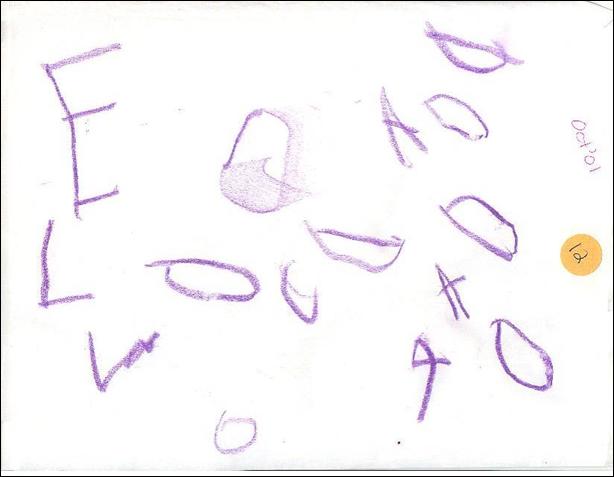
Figure 2. Emma (3 years, 2 months old) wrote letters in purple crayon.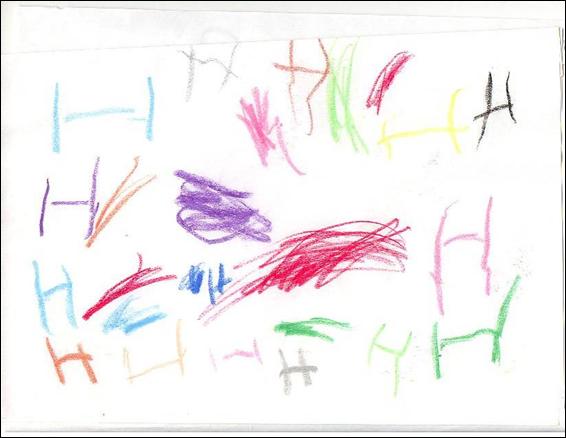
Figure 3. Emma’s (3 years, 2 months old) multicolored Hs.
Emma consistently used color across all types of signs, as her writing artifacts were often visually colorful like her drawings. Despite her emerging use of a writing pencil at age 5, Emma continued to write and draw with as many as 11 different colors on one page. Although writing pencils and black pens were also readily available, she rarely used them to produce signs. Observational data document that at times she deliberately sought out tools related to color instead of writing pencils, which suggests that she viewed color as important in her sign-making.
Emma’s Use of Attributes to Construct Meaning
Figure 4 provides a framework for thinking about how Emma’s signs can be broken down into the uses of collective and individual attributes, and how they worked together to create meaningful representations.
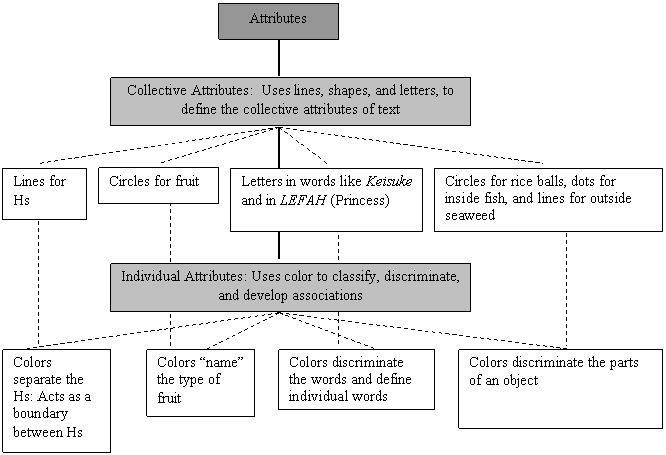
Figure 4. Emma’s use of attributes in constructing meaning in signs: images and writing. Attributes work in a multidimensional way to reduce the ambiguity of objects.
Collective Attributes. In Figure 5, Emma (2 years, 11 months old) drew circles for a head and eyes and a straight line for the nose. On the bottom of Figure 5, she composed lines and circles to look like written language, which she read as “Emma.” These actions suggest a desire to label her pictures and an understanding of how written language can complement and elaborate on her images. Four months later, Emma again used circles to draw Japanese rice balls (onigiri) in Figure 6. Here, the straight lines are the seaweed covering (nori), and dots in the inside of the circles represent the fish inside the rice ball. Figure 7 is another example; here Emma used circles to draw fruit (a lime, an apple, a lemon, a kiwi, and an orange) and thick lines for the stems.
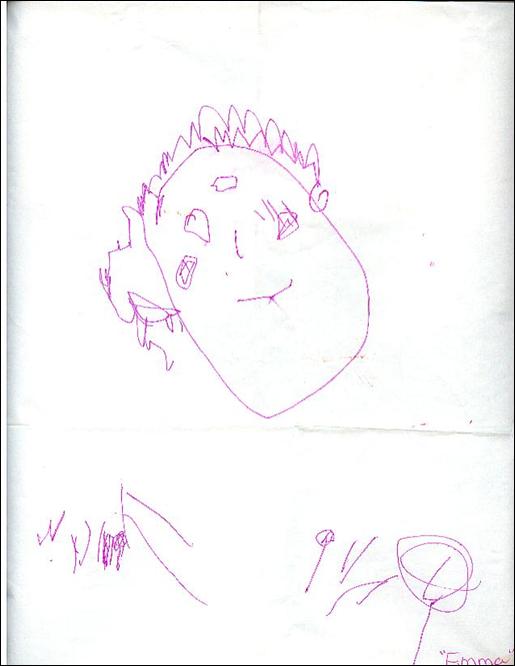
Figure 5. Emma (2 years, 11 months old) drew a picture of herself.
She read the lower marks as “Emma.”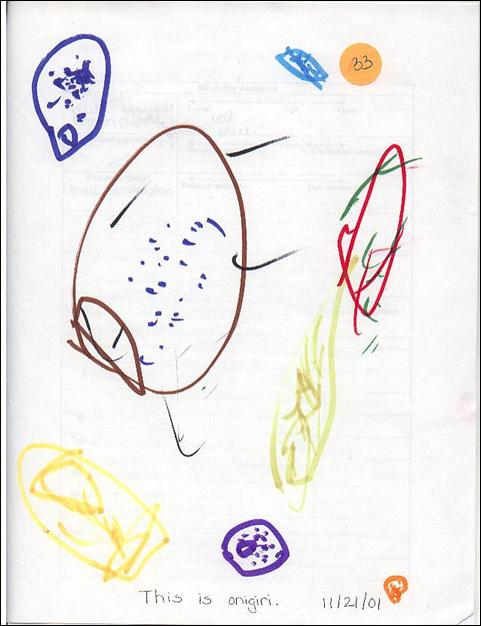
Figure 6. Emma (3 years, 3 months old) drew onigiri (Japanese rice balls).
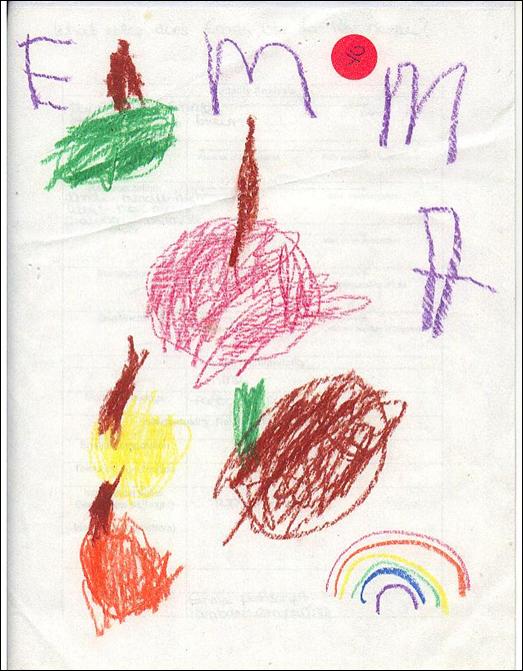
Figure 7. Emma (4 years, 4 months old) drew fruit and a rainbow and wrote her name on the top of the paper.
Figure 8 is an example of how shapes and lines are collective attributes used to write alphabetic letters. Just as a combination of shapes can create more complex images, a variety of letter combinations can make up words and phrases. In this example, Emma (3 years, 5 months old) wrote her friend’s name, Keisuke, from memory and then wrote LEFAH in green, OAH in yellow, FIK in brown, and HAAFM in red. Emma wrote each string of letters on separate lines and used a combination of 10 letters. When I asked Emma to read me what she wrote, she read “Keisuke” and asked me to read the rest. I understood Emma to be at an early level of understanding the phonetic relationships between letters and sounds in her writing development (Kamii & Manning, 2002). During these early stages, I tried to support Emma’s desire to write meaningful words by reading real words for her invented words, which lead me to read LEFAH as Princess, OAH as Scully (our cat), FIK as Rika (Emma’s friend), and HAAFM as Sara (her other friend). Emma had developed hypotheses of what written language looks like (see, for example, Owocki & Goodman, 2002). For instance, in line with what Ferriero and Teberosky (1982) found, Emma felt that the words should be composed of at least three letters (although two-letter words exist) and ought to consist of letter variations. Although Emma did not want to read the words aloud, she understood that written language could be read.
Color as an Individual Attribute. Color served to reduce the ambiguity of objects that Emma represented in her signs by adding another layer to help in discriminating, classifying, or developing associations between different attributes of the objects. In other words, Emma created connections that linked and distinguished key features or associations that represented what she saw in her mind as she put pencil to paper in relation to what her eyes saw in the world around her. For instance, while fruit and rice balls are composed of circles, Emma recognized that she needed other ways to express the meaning of each object she drew. On one hand, she used other types of marks to create associations such as the bold lines defining the stems and the dots in the middle of the circles for the rice balls. Color, on the other hand, was another way for Emma to discriminate and classify objects or parts of objects.
For instance, in Figure 7, color helps discriminate the type of fruit Emma has drawn. She described her drawing as “a red apple, a green lime, a yellow lemon, an orange orange, and a brown kiwi.” These uses of color were also Emma’s attempts to associate what she wanted to create in her signs with the colors of the objects she experienced in her environment.
Figure 6 illustrates a slightly different use of color. Overlapping attributes are used together to represent one object. Here, Emma chose to color the circle brown for the rice ball, used blue dots to distinguish the fish inside the rice ball, and used black lines to further distinguish the seaweed from the rice and fish.
Emma did not necessarily choose conventional colors for her onigiri, as purple, yellow, and blue rice balls do not exist. Her choices may have been affected by the colors available and the ways that she could represent those colors on paper. While salmon can be represented with pink, a pink marker may not have been in her immediate reach. She was also confronted with the dilemma of how to represent white rice on white paper. Emma’s primary interest at the time may have been in discriminating among objects (different rice balls) within her signs rather than in developing associations to the real-life onigiri. The degree to which these factors influenced each other and her sign is difficult to ascertain. What is important is that Emma’s uses of color are influenced by the materials and her interest at the time of composition.
Figure 8 illustrates how color in Emma’s writing also added a laminated, or tightly layered, aspect to her signs to differentiate words. This differentiation did not occur with phonemic discrimination but through the use of color. Notice that Emma started line three with green but crossed it out and wrote in yellow. It could be suggested that Emma felt that using a separate color was important to maintain the pattern of her writing in this particular event; she did not want to repeat letter combinations and colors.
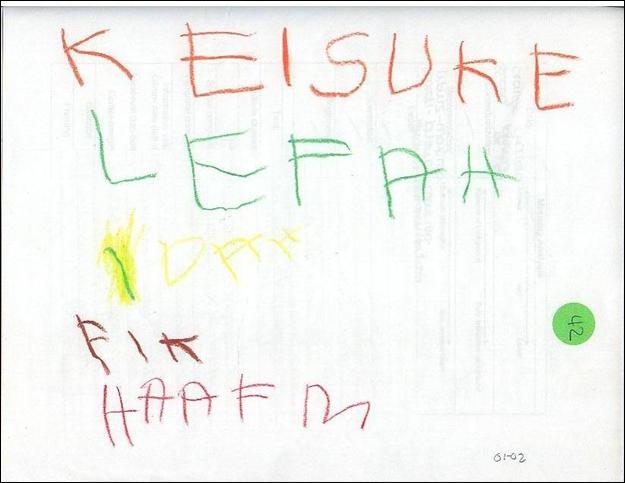
Figure 8. Emma (3 years, 5 months old) wrote her friend Keisuke’s name, LEFAH (Princess), OAH (Scully), FIK (Rika), and HAAFM (Sara).
During the time that these artifacts were created, Emma’s ability to write and draw was still developing. Color provided her with an additional way to create meaningful written and pictorial objects. Because of color, she was able to accomplish this goal without excess attention to representing difficult details accurately.
Discriminating and Associating Attributes: A Sign-Making Event
Although Emma initiated solitary writing and drawing events, she also enjoyed writing and drawing with other people. She would bring crayons to her father, to her aunt, or to me with the expectation that we would write and draw together. At such times, acts of sign-making became a forum for shared sociocultural knowledge. One such occasion is represented in Figures 9 and 10. In Figure 9, Emma (3 years, 3 months) asked me to write her name and draw a rainbow on the top half of the paper. While drawing the rainbow, I always said the acronym for remembering the order of the colors, ROY G BIV, as it was the way I was taught to remember the color sequence. After I finished, Emma took the markers and drew blue, yellow, orange, pink, red, green, brown and purple lines in a circular orientation around the rainbow that I drew. On another sheet of paper (Figure 10), Emma asked me again to draw a rainbow in the corner. After I finished, she drew blue, orange, yellow, green, red, and purple lines on the other side of the paper. Then she wrote a brown E under the rainbow and drew pink and black circular lines.
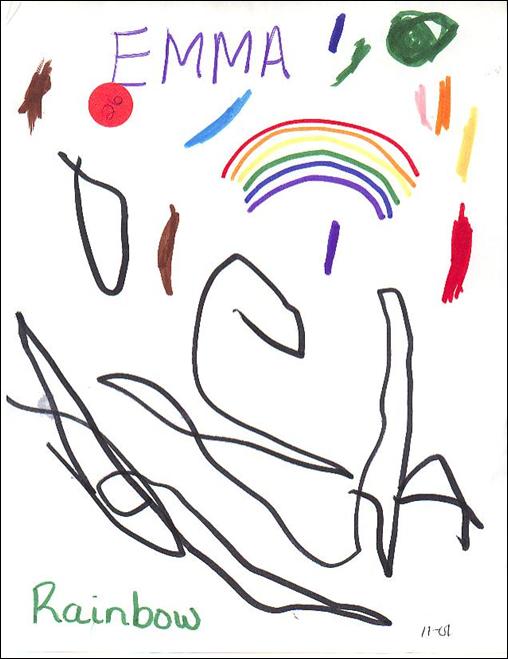
Figure 9. Emma (3 years, 3 months old) and I drew this initial artifact together.
I drew the rainbow and wrote Emma’s name. Emma used the colored markers
to draw colored lines around my rainbow.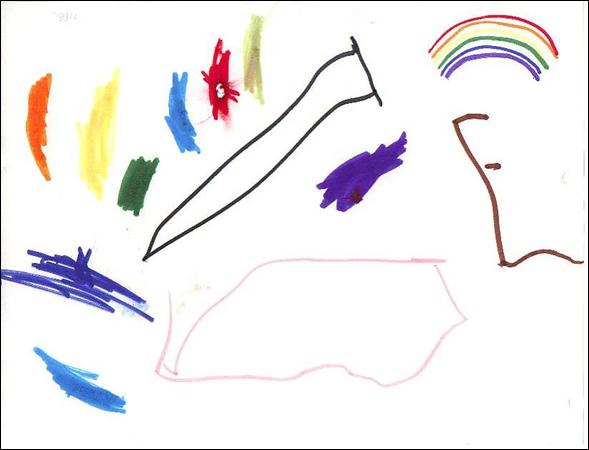
Figure 10. Emma (3 years, 3 months) attempted to draw a rainbow similar to mine and her name by writing the letter E.
In Figure 9, she used colors not present in rainbows to create a circular configuration around the rainbow, but the colors she chose for Figure 10 were more representative of a rainbow. The pink and black used in Figure 9 were not present in Figure 10 (her second attempt). If Figure 10 were rotated, the lines that Emma placed more neatly on top of one another were in almost the same order as in the rainbow that I had drawn. Finally, in Figure 10, she represented her name by writing an E. Hence, Emma’s representations evolved during this activity, as she depended less on my participation and could take risks with the rainbow’s shape, the order of the colors, and the writing of her name.
In drawing rainbows, Emma became more engaged in the sign-making event as she compared her personal invention to my conventional form and recognized some differences and similarities. She made associations, or links, to characteristics that would help her develop classificatory criteria, such as the lines, colors, and sequence of colors. She used my participation as a source of background knowledge. Making such connections between previous and new experiences is one way that children problem solve in their everyday experiences (Rogoff & Gardner, 1984).
Emma’s learning to draw rainbows and write her name was social in nature. A social semiotic perspective provides the possibility of discussing how Emma’s sign was her product that developed out of and was embedded in a social context. The social context was set up around multiple modes and privileged color tools. As Emma and I talked while selecting colors, I was passing on an acronym for remembering the order of colors in a rainbow. We both were drawing pictures and writing names. The knowledge that we shared involved not only the linguistic functions of writing but also ways of understanding how representational marks serve meaningful communicative functions.
Disambiguating Meaning in Signs
Without the appropriate social and/or semiotic context, signs are ambiguous. For instance, written language as a culturally defined sign system poses many challenges for children. Children are extremely adept at making sense of language in the context of other semiotic modes. However, when written language is isolated from other meaningful semiotic relationships, children are not always successful in deciphering the decontextualized ambiguity that language presents, especially if they have not yet learned to read the symbol system. To illustrate how color works in conjunction with other modes to clarify the meaning of signs, I pose the following question: in the Japanese sentence below, how many words are there?
![]()
For someone who does not understand Japanese, this may be an intimidating question. Japanese does not require word spacing in written material, and punctuation usually consists of a maru (circle). In addition to not knowing how many words are in the sentence, it is difficult to tell what type of sentence, such as a declarative or a question. However, even if we cannot read or understand it, its ambiguity can be reduced and we can make a logical guess about the number of words present if the sentence were written as follows:
![]()
In fact, there are three Japanese words in the above sentence, which translates as “Please read this.” Color works here as a boundary mechanism, separating words as it plays the role of an individual attribute of the Japanese symbols.
Similarly, color provided Emma with a resource for reducing ambiguity while constructing meaning in her signs. Figure 8 illustrates this point as Emma combined color with written language to make her strings of letters make sense. Another example occurred when Emma was 3 years and 2 months old. She “wrote” four wavy lines; one blue, one pink, one purple, and one green. When I asked her what she wrote, Emma read each line as a different friend’s name. Combining colors with wavy lines allowed her to discriminate the “names” and disambiguate the meaning of her marks.
Discussion
Use of color was a means by which Emma created meaning in her signs. By comparing, analyzing, finding patterns, and developing sets of associations between objects, social practice, and color, Emma linked her perceptions of the world in which she participated (the “real” world) with the spaces that she created on paper (her imaginative world) (Dyson, 1993). As Heath and Wolf (2004) note, children’s creativity and their attention to details is “cognitive work,” through which they build habits of mind and make plausible choices to construct meaning and reduce the ambiguity of objects and language.
Research has laid critical theoretical foundations for rethinking the roles of children’s drawing and writing in learning literacy. To move toward conventional literacy, children must modify their use of written forms to make them understandable to others in their cultural environments. This process, over several years’ time, may involve many attempts to disambiguate and understand the meaning of written language forms (Owocki & Goodman, 2002). This study supports and extends that research, further revealing children’s sign-making as intentional, motivated participation in social activity.
In Emma’s case, this process incorporated colored tools, which served two major functions. First, they facilitated and mediated her writing and drawing attempts. Until 7 years of age, Emma did not seem to feel restricted to pencils and pens for writing. Her physical use of color tools was intertwined with her reproduction of the visual characteristics (such as shape and the color) of real-life objects. Second, color mediated the ways in which she wrote or drew. The availability of particular colors affected what she could select, as with her rice balls drawing. On the other hand, color as a semiotic resource influenced the content and design of her artifacts. For instance, Emma selected more conventional colors for her second rainbow drawing than for her first rainbow. Similarly, she organized her writing by colors in Figure 8. In both examples, Emma's color usage suggests how color could represent her knowledge and was a “way of designing symbols” (Kenner & Kress, 2003, p. 199). In other words, Emma’s employment of color was intentional in meeting her goals for creating meaningful signs. She used color in her design of a wide range of symbols, including Japanese and English characters, faces, fruit, and rainbows.
While I focused on color, it was one of many possible modalities for Emma’s sign-making. Among other possibilities were four scripts related to English and Japanese, as well as speech and music. This array of potential resources encouraged Emma to be flexible in choosing ways to best communicate meaning in her signs.
As Emma’s sophistication with language increased, the better she became at making mental linkages and comparisons. She frequently revised and re-created her signs, altering the ways in which she constructed details. For instance, in Figure 11, drawn three years after Figure 7, Emma drew fruit once again. However, distinctive differences show how her representation of objects evolved. While Emma used circles and lines as collective attributes to define the fruits in both Figures 7 and 11, she did not use color as an individual attribute in Figure 11. Instead, she drew lines and circles to produce finer details, and she used relative size to bring a greater level of realism to her representations. She also used Japanese characters to label the objects in her signs, creating a relationship between writing and drawing. Tool selection is another difference between these two artifacts. In Figure 11, Emma used a red pen rather than marker or crayon, which she had preferred when younger; she did not seem to feel the need for color to differentiate among the objects she drew.
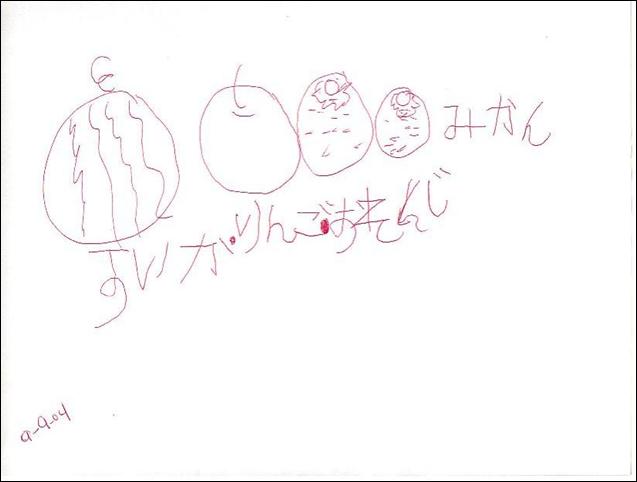
Figure 11. Emma (6 years, 1 month old) drew fruit and labeled them in Japanese in a red pen. From left to write, it reads “watermelon,” “apple,” “orange,” and “tangerine.”
Implications of the Study
Limitations
Because this study is an in-depth look at one child’s integration of color into her sign-making, the findings cannot be generalized to other children. On the other hand, such a study can help parents and educators to become more alert to the meaning of children’s attempts to use a variety of tools and modes in their sign-making, widening perspectives within the field regarding children’s writing and drawing processes.
Implications for Practitioners
This study has implications for educators, as well as for parents. It is important for practitioners to recognize that children’s sign-making is directly related to their interest and to the resources and tools that are immediately available to them (Kress, 1997). For Emma, the immediate availability of color tools in the home facilitated her written and pictorial representations. Instead of limiting children to paper and pencil activities, educators can allow children to freely explore tools and materials and use their imaginations to create a variety of signs. In this way, children learn that certain materials have particular benefits and limitations.
This approach may be especially important for children who come to school with little exposure to the tools and materials of sign-making, who may not appear as adept at understanding the potentials and drawbacks of different materials. For instance, children quickly learn that colored paper is not always effective when they want to draw with different colored markers, which may cause them to search out other types of materials to create cards or self-portraits.
Educators need to recognize that children may have varying experiences with tools for multimodal expression, because of such factors as what families are economically able to provide and familial beliefs regarding what children should have available to them in the home. Thus classroom organization and practices may either facilitate or deprive children of meaningful ways of learning to write.
While this study focused on Emma’s writing and drawing, children may express themselves through other modalities, such as storytelling, singing, or dancing. For Emma, use of color in writing and drawing appeared to be an individual preference. She drew fruit and rainbows with colored markers, but another child might have taken an apple and the same markers and called them a bowling ball and pins. These types of re-naming are only possible when children have access to a variety of tools and materials, allowing them to consider how the colors, textures, shapes, and sizes contribute to what they want to create.
Classroom routines and the ways that materials are organized have an impact on children’s sign-making processes. Common classroom practices associate the use of a pencil with such tasks as handwriting, fill-in-the blanks, journal writing, and copying sentences. Even in journal writing, classroom routines may require children to write first, then draw when the writing is done, or in some cases, not at all. Writing and drawing with a variety of color tools is seldom given serious attention in schools. But Emma’s serious interest in color allowed her to disambiguate a number of representations in her writing and drawing. Meaning, for her, came not only from shapes and letters but also from color. Teachers can create more equitable classroom practices by acknowledging the value of and utilizing the different ways children communicate. Educators might discover children’s multimodal potentials by observing and documenting the children’s creative processes as they communicate through oral and written modes. They can then encourage exploration of multimodal abilities within the social semiotic domains that are meaningful to children.
Suggestions for Further Research
Studying the choices that children make when they create signs, we can begin to rethink writing as a solely developmental and “basic” skill and to consider writing as meaningful engagement with other people and semiotic resources (Dyson, 2007). In this way, we can widen literacy curricula to value the symbolic flexibility that children exhibit in learning to write.
Further systematic research is needed into the ways that children progress through multiple, multimodal pathways using a variety of tools to assist in their literacy learning. Two questions arise: (1) Are the presence and casual use of color tools for writing and drawing in the classroom beneficial for children? (2) Do we understand the benefits and limitations of the different semiotic resources that children use in sign-making? While I proposed that color served important functions for Emma in classifying, discriminating, and making associations in her sign-making, this list of functions is far from exhaustive. Additional research is needed to discover the full extent that color as a semiotic resource allows children to create and understand the landscapes of written and pictorial representations.
References
Adams, Marilyn J. (2001). Alphabetic anxiety and explicit, systematic phonics instruction: A cognitive science perspective. In Susan B. Neuman & David K. Dickinson (Eds.), Handbook of early literacy research (pp. 66-80). New York: Guilford Press.
Baghban, Marcia. (2007). Scribbles, labels, and stories: The role of drawing in the development of writing. Young Children, 62(1), 20-26.
Barton, David, & Tusting, Karin (Eds.). (2005). Beyond communities of practice: Language, power, and social context. New York: Cambridge University Press.
Bissex, Glenda L. (1980) Gyns at wrk: A child learns to write and read. Cambridge: Harvard University Press.
Bogdan, Robert C., & Biklen, Sari Knopp. (2007). Qualitative research for education: An introduction to theories and methods (5th ed.). New York: Pearson.
Cocks, Alison J. (2006). The ethical maze: Finding an inclusive path towards gaining children's agreement to research participation. Childhood, 13(2), 247-266.
Dudley-Marling, Curt, & Paugh, Pat. (2005). The rich get richer; the poor get direct instruction. In Bess Altwerger (Ed.), Reading for profit: How the bottom line leaves kids behind (pp. 156-171). Portsmouth, NH: Heinemann.
Dyson, Anne Haas. (1993). Social worlds of children learning to write in an urban primary school. New York: Teachers College Press.
Dyson, Anne Haas. (2002). Writing and children's symbolic repertoires: Development unhinged. In Susan B. Neuman & David K. Dickinson (Eds.), Handbook of early literacy research (pp. 126-141). New York: Guilford.
Dyson, Anne Haas. (2007). Literacy "basics" in childhood spaces: A critical perspective on the "basics." In Yetta Goodman & Prisca Martens (Eds.), Critical issues in early literacy (pp. 153-174). Mahwah, NJ: Erlbaum.
Ferriero, Emilia, & Teberosky, Ana. (1982). Literacy before schooling (Karen Goodman Castro, trans.). Portsmouth, NH: Heinemann.
Gallas, Karen. (1994). The languages of learning: How children talk, write, dance, draw, and sing their understanding of the world. New York: Teachers College Press.
Gardner, Howard. (1980). Artful scribbles: The significance of children's drawings. New York: Basic Books.
Gee, James Paul. (2003). What video games have to teach us about learning and literacy? New York: Palgrave Macmillan.
González, Norma; Moll, Luis; & Amanti, Cathy (Eds.). (2005). Funds of knowledge: Theorizing practices in households, communities, and classrooms. Mahwah, NJ: Erlbaum.
Halliday, M.A.K. (1975). Leaning how to mean: Explorations in the development of language. London: Edward Arnold.
Harste, Jerome C.; Woodward, Virginia A.;& Burke, Carolyn L. (1984). Language stories and literacy lessons. Portsmouth, NH: Heinemann.
Heath, Shirley Brice, & Wolf, Shelby. (2004). Art is all about looking: Drawing and detail. London: Creative Partnerships.
Hodge, Robert, & Kress, Gunther. (1988). Social semiotics. Ithaca, NY: Cornell University Press.
Holquist, Michael (Ed.). (1981). The dialogic imagination: Four essays by M.M. Bakhtin (Caryl Emerson & Michael Holquist, Trans). Austin: University of Texas Press.
Kabuto, Bobbie. (2008). Parent-research as a process of inquiry: An ethnographic perspective. Ethnography and Education, 3(2), 177-194.
Kamii, Constance, & Manning, Maryann. (2002). Phonemic awareness and beginning reading and writing. Journal of Research in Childhood Education, 17(1), 38-46.
Kenner, Charmian, & Kress, Gunther. (2003). The multisemiotic resources of biliterate children. Journal of Early Childhood Literacy, 3(2), 179-202.
Kress, Gunther. (1997). Before writing: Rethinking the paths to literacy. New York: Routledge.
Kress, Gunther. (2001). Visual and verbal modes of representation in electronically mediated communications: The potentials of new forms of text. In Ilana Snyder (Ed.), Page to screen: Taking literacy into the electronic era (pp. 51-80). New York: Routledge.
Kress, Gunther, & Hodge, Robert. (1979). Language as ideology. London: Routledge & Kegan Paul.
Kress, Gunther; Jewitt, Carey; Ogborn, Jon; & Charalampos, Tsatsarelis. (2001). Multimodal teaching and learning: The rhetorics of the science classroom. London: Continuum.
Kress, Gunther, & van Leeuwen, Theo. (1996). Reading images: The grammar of visual design. London: Routledge.
Lancaster, Lesley. (2001). Staring at the page: The functions of gaze in a young child's interpretation of symbolic forms. Journal of Early Childhood Literacy, 1(2), 131-152.
Lave, Jean, & Wenger, Etienne. (1991). Situated learning: Legitimate peripheral participation. New York: Cambridge University Press.
Leopold, Werner F. (1939-1949). Speech development of a bilingual child: A linguist's record (Vols. 1-4). Evanston, IL: Northwestern University Press.
Martens, Prisca. (1996). I already know how to read: A child's view of literacy. Portsmouth, NH: Heinemann.
Martens, Prisca, & Goodman, Yetta. (2005). The influence of decodable texts on readers' strategies. In Bess Altwerger (Ed.), Reading for profit: How the bottom line leaves kids behind (pp. 78-95). Portsmouth, NH: Heinemann.
Owocki, Gretchen, & Goodman, Yetta. (2002). Kidwatching: Documenting children's literacy development. Portsmouth, NH: Heinemann.
Pahl, Kate. (2007). Creativity in events and practices: A lens for understanding children's multimodal texts. Literacy, 41(2), 86-92.
Piaget, Jean. (1928). The child's conception of the world. London: Routledge.
Purcell-Gates, Victoria. (2004). Ethnographic research. In Nell K. Duke & Marla H. Mallette (Eds.), Literacy research methodologies (pp. 92-113). New York : Guilford Press.
Robertson, Jennifer. (2002) Reflexivity redux: A pithy polemic on "positionality." Anthropological Quarterly, 75(4), 785-792.
Rogoff, Barbara. (2003). The cultural nature of human development. New York: Oxford University Press.
Rogoff, Barbara, & Gardner, William. (1984). Adult guidance of cognitive development. In Barbara Rogoff & Jean Lave (Eds.), Everyday cognition: Development in social context (pp. 95-116). Cambridge, MA: Harvard University Press.
Rowe, Deborah Wells. (1998). The literate potentials of book-related dramatic play. Reading Research Quarterly, 33(1), 10-35.
Rowsell, Jennifer, & Pahl, Kate. (2007). Sedimented identities in texts: Instances of practice. Reading Research Quarterly, 42(3), 388-404.
Sassoon, Rosemary. (1995). The acquisition of a second writing system. London: Intellect.
Shaywitz, Sally. (2003). Overcoming dyslexia: A new and complete science-based program for reading problems at any level. New York: Knopf.
Taylor, Denny. (1993). From the child's point of view. Portsmouth, NH: Heinemann.
Taylor, Denny, & Kabuto, Bobbie. (2007). Reading everybody's child: Teaching literacy as a human right. In Yetta Goodman & Prisca Martens, Critical issues in early literacy (pp. 273-290). Mahwah, NJ: Erlbaum.
Vincent, John. (2006). Children writing; Multimodality and assessment in the writing classroom. Literacy, 40(1), 51-57.
Vygotsky, L. S. (1986). Thought and language (Alex Kozulin, Trans.). Cambridge, MA: MIT Press.
Wenger, Etienne. (1998). Communities of practice: Learning, meaning, and identity. New York: Cambridge University Press.
Author Information
Bobbie Kabuto, Ph.D., is an assistant professor at Queens College, City University of New York, where she teaches courses in the areas of early language and literacy, bilingualism and biliteracy, and language and literacy in the elementary years. Her research interests include the relationships among early bi/literacy, socially constructed identities, and language ideologies. She currently works with families of struggling beginning readers and writers.
Bobbie Kabuto, Ph.D.Assistant Professor
Elementary and Early Childhood Department
Queens College, City University of New York
65-30 Kissena Boulevard
Flushing, NY 11367-1597
Telephone: 718-997-5307
Email: Bobbie.Kabuto@qc.cuny.edu

